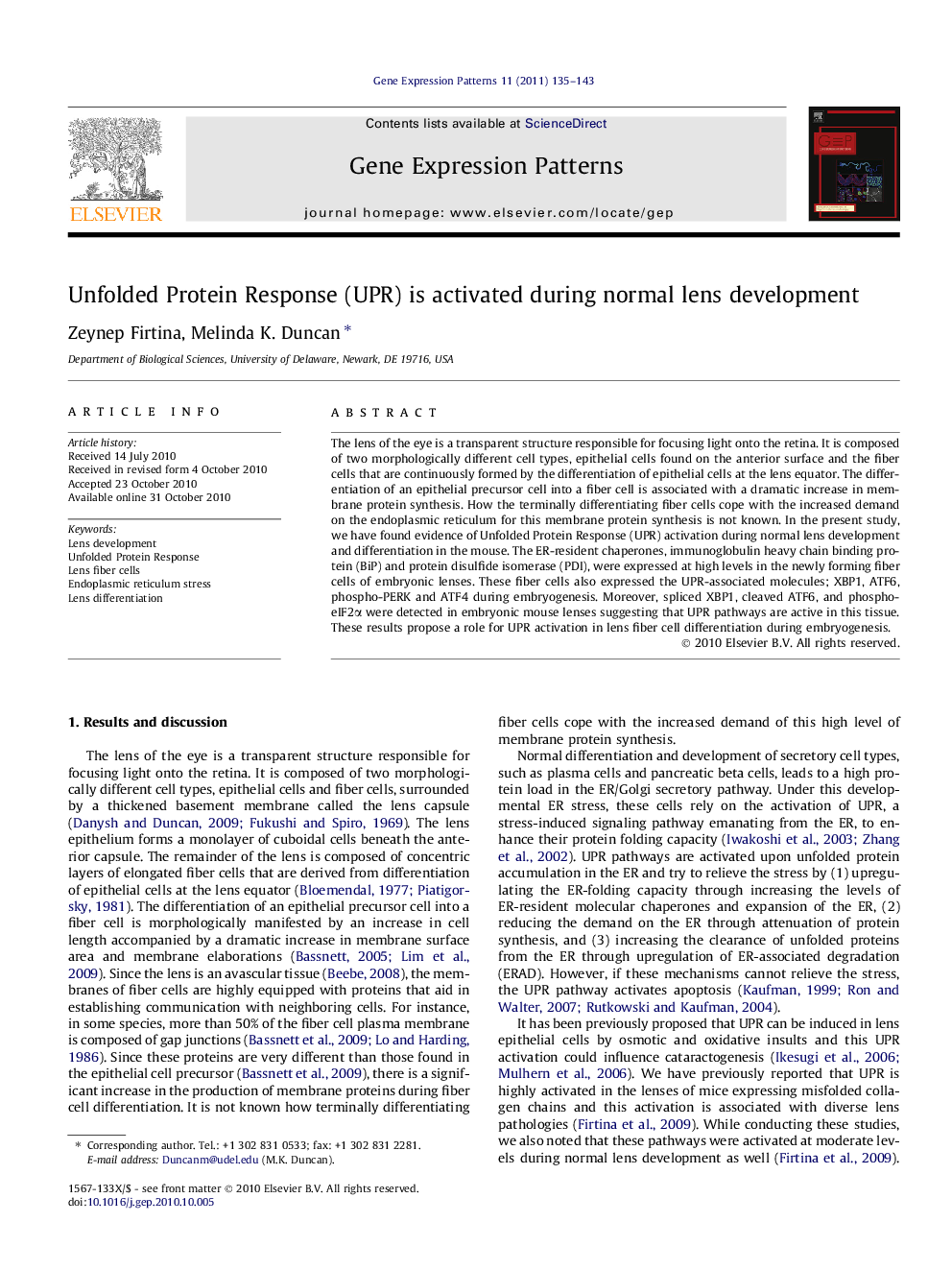| Article ID | Journal | Published Year | Pages | File Type |
|---|---|---|---|---|
| 8471112 | Gene Expression Patterns | 2011 | 9 Pages |
Abstract
The lens of the eye is a transparent structure responsible for focusing light onto the retina. It is composed of two morphologically different cell types, epithelial cells found on the anterior surface and the fiber cells that are continuously formed by the differentiation of epithelial cells at the lens equator. The differentiation of an epithelial precursor cell into a fiber cell is associated with a dramatic increase in membrane protein synthesis. How the terminally differentiating fiber cells cope with the increased demand on the endoplasmic reticulum for this membrane protein synthesis is not known. In the present study, we have found evidence of Unfolded Protein Response (UPR) activation during normal lens development and differentiation in the mouse. The ER-resident chaperones, immunoglobulin heavy chain binding protein (BiP) and protein disulfide isomerase (PDI), were expressed at high levels in the newly forming fiber cells of embryonic lenses. These fiber cells also expressed the UPR-associated molecules; XBP1, ATF6, phospho-PERK and ATF4 during embryogenesis. Moreover, spliced XBP1, cleaved ATF6, and phospho-eIF2α were detected in embryonic mouse lenses suggesting that UPR pathways are active in this tissue. These results propose a role for UPR activation in lens fiber cell differentiation during embryogenesis.
Keywords
Related Topics
Life Sciences
Biochemistry, Genetics and Molecular Biology
Cell Biology
Authors
Zeynep Firtina, Melinda K. Duncan,
